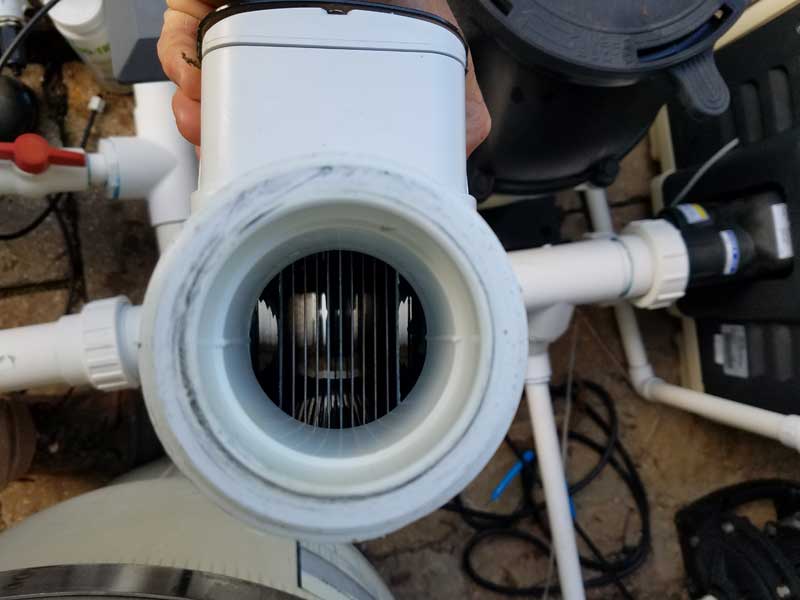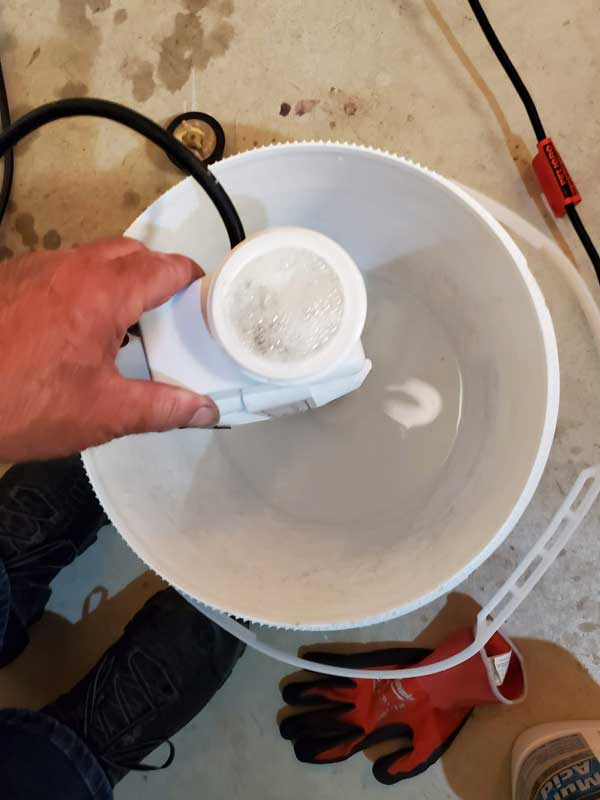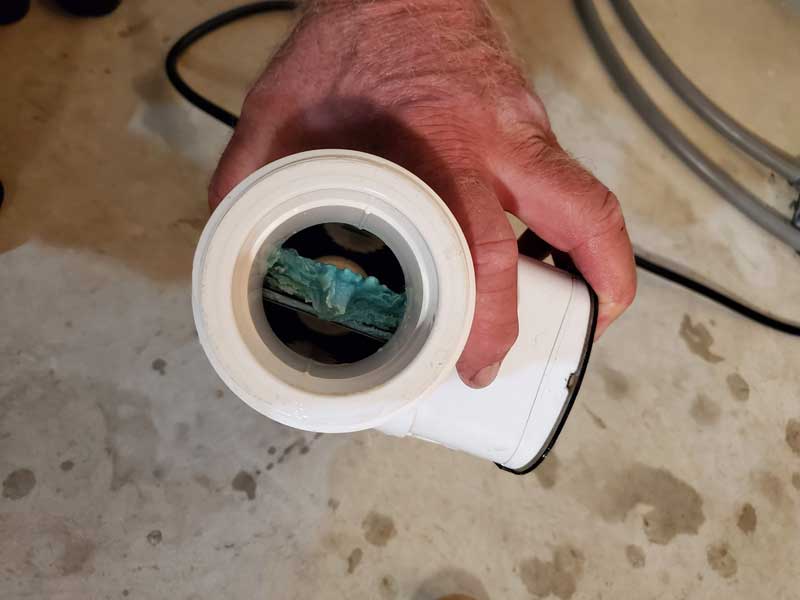How borates can help minimize maintenance between service visits
by jason_cramp | April 13, 2021 10:00 am
 [1]
[1]As pool professionals plan for another busy season, the question of salt chlorine generators needs to be addressed. It is important to remember many pool owners still think their salt chlorine generator takes care of all the water maintenance by itself—like magic. This misconception will likely be even more prevalent in the coming years because so many new pool owners were added to the market this past season. That said, pool professionals realize this is not the case and, just like pools that do not use chlorine generators, there is a case to be made for adding borates to the water to ensure chlorine generators are not working overtime and causing harmful side effects to the pool and to the generator itself.
Additionally, homeowners are going to be using their pool more than ever and the industry needs to ensure these customers—especially newer owners—remain satisfied with their investment by making them easy to maintain. With service techs stretched to their limits, borates can help minimize maintenance between service visits and keep customers happy.
Explaining salt chlorine generators to pool owners
It is always a good idea for technicians to remind consumers salt chlorine generators produce sanitizer to keep their pool water clean—especially today as many are being vigilant about sanitation because of the pandemic. A technician should start by explaining to clients how salt chlorine generators produce chlorine onsite—using salt and electrolysis—to sanitize the water. As a result, they do not need to store or manually introduce chlorine into the pool.
Initially, new pool owners using a salt chlorine generator system will find their pool water to be clean and clear. However, when additional water treatment products and/or applications are not introduced for weeks or even months at a time, the lack of monitoring/adjusting water balance parameters and sufficient oxidation will eventually lead to various water complications. Therefore, it is important the industry addresses proper water maintenance and educates consumers on the proper use of these devices.
To ensure pool owners understand the full extent of this equipment, they need to know a) a salt chlorine generator alone will not solve all their water maintenance needs, and b) the equipment itself has its own specific maintenance requirements.
Therefore, it is important for service techs to take the time to explain how water from their pool containing salt (sodium chloride) enters the salt chlorine generator cell (NaCl plus H2O). Once inside, an electric charge is applied to the water using electrolytic plates, which splits the water molecule, and turns chloride ions into chlorine (hydrogen) gas. Then, as the chlorine gas dissolves into the water, pure chlorine is returned to the pool.
For these systems, a large amount of pool-grade salt is added into the pool to establish a concentration of about 3000 to 5000 parts per million (ppm). It is important to maintain the appropriate salt concentration, using too much can increase the potential for corrosion. Pools with salt chlorine generators continuously generate sodium hydroxide (NaOH) when the NaCl is broken into free chlorine. Unfortunately, NaOH has a pH of approximately 13, which will quickly increase the pool’s pH. The continuous addition of NaOH results in a never-ending increase of the pool water’s pH. If this is left to run rampant, the high pH will lead to corrosion of the pool components.
Using borates to combat side effects of salt chlorine generators
 [2]
[2]Inherent in the way salt chlorine generators work are side effects, which can adversely impact the successful operation and appearance of a pool—namely corrosion and scale. Fortunately, borates can be used as a simple way to overcome many of these side effects. They are administered to the pool typically once a year. Borates are an extracted earth mineral that possess several benefits to recreational water. They are unique because they remain in the water and are only lost through water removal (e.g. splash out or backwashing). Adding borates during pool start-up is ideal, as they serve as an additional buffering system for the water.
One of the primary reasons borates have gained popularity among pool service professionals is their ability to control corrosion in a saltwater pool environment. Borate products are available in powders and slurries and should be added directly to the pool.
Borates have a buffering ability that allows pool water to remain at a more neutral pH level for a longer period. In turn, it allows the chlorine to be more efficient and effective at sanitizing the water, ensuring pool owners their pool will always be sanitized and safe.
Preventing corrosion
As mentioned earlier, the electrolysis that occurs in salt chlorine generators can cause de-plating problems on handrails, light niches, and other metal components. Fortunately, borates provide another buffering system for the water that eliminates these effects.
Since salt chlorine generators are sold to make sanitizing pool water easier, the last thing pool professionals want is this equipment to cause additional maintenance issues.
Borates add an anti-corrosion effect, which helps protect against rust on pool equipment, accessories, and fixtures. Customers who use borates are less likely to be in the store looking for a new ladder because their previous one rusted out. Even vinyl liners tend to last longer. These are things service techs and specialty retailers should emphasize to the customer as being worth the extra investment.
Preventing calcium scale
 [3]
[3]High calcium content can lead to scale formation (as well as cloudy water). Scale forms when calcium and carbonates crystallize on the pool’s walls around the waterline, surfaces, and equipment. This problem is compounded by high pH; however, borates can help fight this.
As salt chlorine generators have become almost standard equipment on most new pools, borates have become even more important because scale can reduce the life of the salt chlorine generator’s cell plates. By maintaining borate levels at 50 ppm in pools equipped with salt chlorine generating systems, pool professionals will find salt cells last much longer. The benefits are twofold: consumers will save by not having to replace the cell plates and service techs will avoid having to make an extra trip to the pool during an extremely busy summer.
In fact, many pool professionals are finding salt conversion cells on chlorine generators in pools where borates are being used can easily last a decade. This is a real selling point as even customers who ensure their pool water is balanced typically only get five to six years out of an equivalent cell.
The reason salt cells last longer when borates are used is because it bichelates (or bonds) with calcium present in the water, allowing the cell to remain cleaner because less scale forms. Although scale does form in some cases, it is a much softer scale and is easier to remove. Further, as less acid is required to clean the cell plates, plate damage is minimized as well.
Due to the high pH at the surface of the cathode plates within the salt chlorine generator, scale formation is highly likely. In fact, it is important to note scale formation will occur inside the salt chlorine generator even if the pool water is properly balanced.
To combat this, many service professionals start up pools with approximately 30 to 50 ppm of borates in the water, which normally lasts between one to two years. After about a year-and-a-half, it is typical for a service tech to need to add more borates to get the levels back up.
Promoting borates
Although borates are mainly a water balancing tool for pH control, pool owners also like the way it makes the water look and feel. This product increases the refractory index of the water so more light is reflected, which gives the pool more ‘sparkle.’
Finally, borates help to improve the overall bather experience. All borates can be considered derivatives of boric acid—the active ingredient in eye drops—and this soothing ability translates into pools and hot tubs treated with borate. In addition, because borates are a mineral salt, they help make skin feel softer and help reduce ‘red eye’ from swimming.
With so many new and existing pools being equipped with salt chlorine generators, there is a definite case for using borates to make water maintenance easier on pool owners and service professionals. Adding them once a year can make all the difference to those who chose a salt chlorine generator.
 [4]John ‘The Legend’ Bokor is the host of Haviland Pool and Spa Products’ “Legendary Pools and Spas,” a web series that promotes the fun of owning a pool or hot tub. He is also the company’s director of sales and has more than 25 years of experience in the pool retail industry. Bokor, a certified pool operator (CPO), regularly speaks to professional dealers and pool owners within his territory about water chemistry and maintenance. He can be reached via email at jbokor@havilandusa.com[5] and on Facebook @LegendaryPLS[6].
[4]John ‘The Legend’ Bokor is the host of Haviland Pool and Spa Products’ “Legendary Pools and Spas,” a web series that promotes the fun of owning a pool or hot tub. He is also the company’s director of sales and has more than 25 years of experience in the pool retail industry. Bokor, a certified pool operator (CPO), regularly speaks to professional dealers and pool owners within his territory about water chemistry and maintenance. He can be reached via email at jbokor@havilandusa.com[5] and on Facebook @LegendaryPLS[6].
- [Image]: https://www.poolspamarketing.com/wp-content/uploads/2021/06/Courtesy-All-Seasons-Illinois-cleaned-SCG-2019_05_13_CON229_4.jpg
- [Image]: https://www.poolspamarketing.com/wp-content/uploads/2021/06/Courtesy-All-Seasons-Cleaning-scale-from-SCG-2020_09_23_SER369468_5.jpg
- [Image]: https://www.poolspamarketing.com/wp-content/uploads/2021/06/Courtesy-All-Seasons-build-up-of-scale-on-SCG-scale-discolored-by-copper-2020_68_7.jpg
- [Image]: https://www.poolspamarketing.com/wp-content/uploads/2021/06/Bokor_Headshot.jpg
- jbokor@havilandusa.com: mailto:jbokor@havilandusa.com
- @LegendaryPLS: https://www.facebook.com/pg/LegendaryPLS/videos/
Source URL: https://www.poolspamarketing.com/trade/features/expert-advice/how-borates-can-help-minimize-pool-maintenance-between-service-visits/